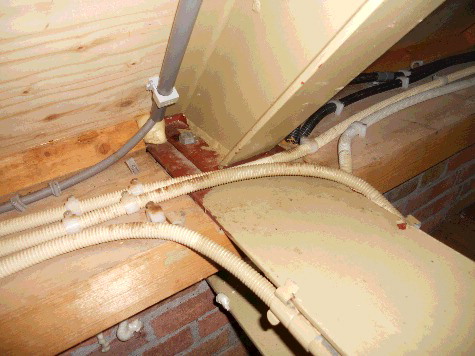Figures & data
Figure 1. Potential introduction routes for AIV into a commercial poultry farm. To avoid introduction of the virus, biosecurity measures are aimed towards reducing (in)direct contact between wild birds and commercial poultry. Airborne virus may enter the farm through the ventilation openings and contaminated equipment, clothing and shoes are other potential sources of virus. Rodents in water, on land or on the roof of a farm can come into contact with faeces of wild birds, potentially containing AIV. Rodents may enter the poultry house through unsealed roofs, doors and other openings (needed for manure or egg belts), and may play a role in the spread of virus from wild birds to commercial poultry and between infected poultry farms. Effective rodent control should therefore be an integral part of biosecurity measures for poultry farms.


